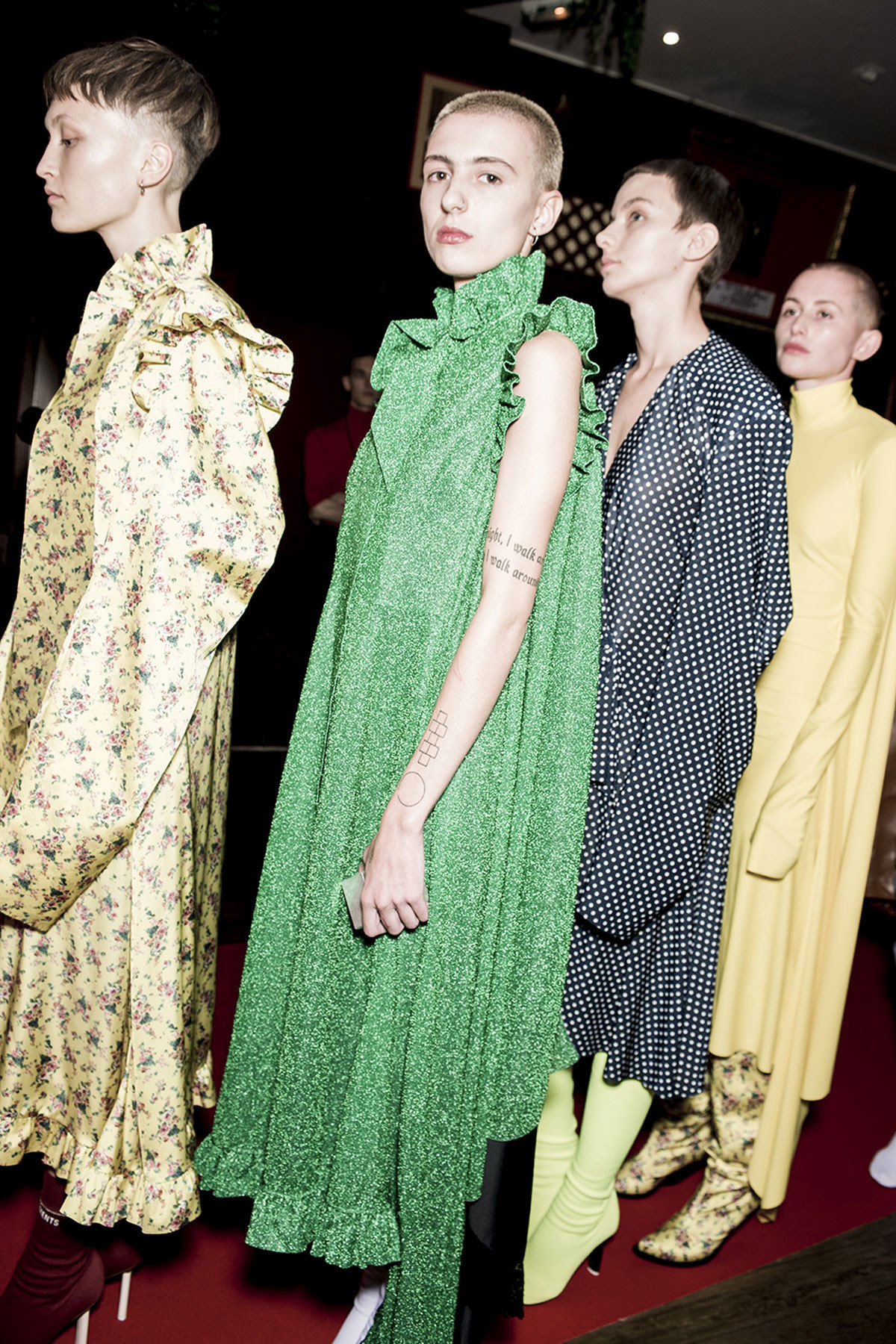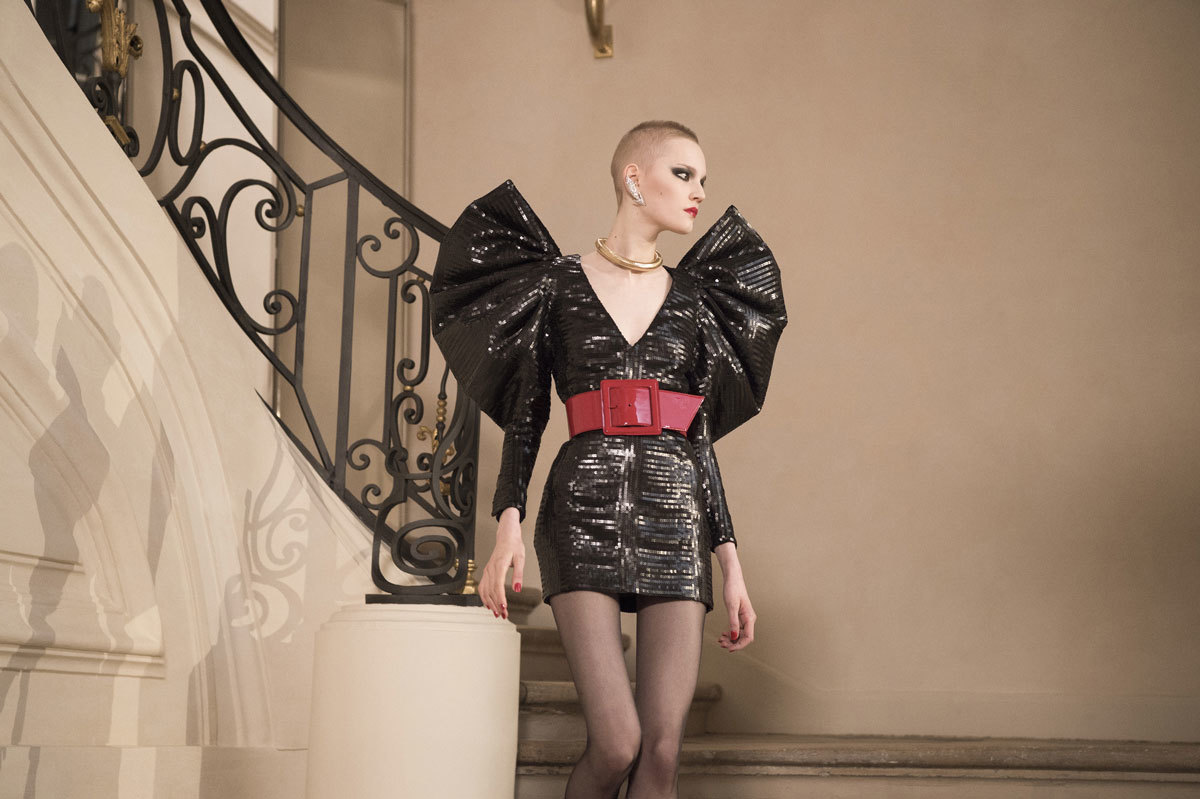Throughout history, a woman’s status, femininity, and even fertility have been determined by her tresses. The ancient Greeks deemed pubic hair uncivilized. Ancient Egyptians endured a grueling full-body hair removal process involving beeswax and tweezers. In Zhou Dynasty China, teenage girls underwent an elaborate hair pinning ceremony to signal their eligibility for marriage. And in 2016, women’s hair, or the lack of it, is no less loaded with symbolism.
Between the current war on conventional beauty standards and the search for unpredictable muses, the shaved head is emerging as the ultimate assault on the age-old beauty myth that a woman’s attractiveness is relative to how much hair she has on her head, and how little covers the rest of her body. Buzz-cut model Ruth Bell was the breakout star of the 2015 runways. Amber Rose is more visible than ever as the public face of the crusade to end slut-shaming. And Instagram darlings like Alana Derksen and Braina Laviena are making the transition from social media stars to fashion world forces.
Of course, the “no hair, don’t care” mentality is nothing new. The look has long been synonymous with the anti-establishment aesthetic of punk. And women of color have been rocking this style forever. Icon Grace Jones (who claimed that shaving her head led directly to her first orgasm), actress Lupita Nyong’o, and trailblazing 90s supermodel Alek Wek are just three of the many women who make hair seem overrated.
But pressure to maintain an interminable mane is still the status quo today. The global haircare market is currently valued at $83.1 billion, and a Google search that begins “do men like” immediately prompts the suggestion “short hair” (“to cuddle” and “virgins” are close runners up). Women who defy this gendered stereotype are still frequently shunned as unstable, sexless, or threatening. If pop culture past is any indication, the old adage may as well be: hell hath no fury like a woman shorn.
Take Sinead O’Connor, the quintessential bald badass who raged against patriarchal music executives with her defiant aesthetic, or Charlize Theron as Furiosa, the fictional feminist protagonist of Mad Max: Fury Road who emancipates the Five Wives from the shackles of misogyny. And #neverforget pop icon Britney Spears’ infamous 2007 breakdown, which climaxed with the former Mickey Mouse Clubber shaving her head at a suburban salon observed by throngs of paparazzi. All three wielded hair, or rather hairlessness, as a weapon — to deliver a message that they could not be puppeteered by the patriarchy or silenced into submission.
While having a shaved head is still far from mainstream, it is on the rise. Witness the success of British model Ruth Bell. From Saint Laurent to DKNY, Bell has charmed the fashion world with her vertiginous cheekbones and peroxide dome. Prompted to make the cut for a McQueen campaign, she told The Guardian that she attributes the recent surge of shaved headed models to the industry’s newfound interest in “girls with more character.” “Ideals of beauty are becoming more wide ranging and more accepting of those who didn’t fit the mould maybe a decade or so ago,” she continued. Bell is joined by big names including Kris Gottschalk and Tamy Glauser, who are dropkicking traditional notions of femininity and booking more gigs than ever as a result of their bold, shorn-headed aesthetics.

On Instagram, too, bald babes are everywhere. There’s Alana Derksen, the Canadian-born anti-model approached to do Paris runway by Vetements, model Mackenzie Tallulah Jones, and photographer Brooke Barone, who’s equally adept on both sides of the camera. And that’s just in the small circle of personalities that this writer (who shaved her head one week before Britney in 2007) follows.
“As far as I’ve known, hair trends generally start from celebrity/editorial and trickle down. But considering that so much influence comes from social media, plus a much louder conversation about gender-fluidity all around, [that] basically offers a ton of good-looking people looking great with no hair,” explains Sable Yong, a freelance beauty editor who has worked with xoVain and Teen Vogue. Yong is also one of ten women to star in Dove’s latest “Love Your Hair” campaign, an 85-second film encouraging women to wear their hair however they damn well please, regardless of societal expectations and stigmas policing what constitutes professionalism, beauty, and age appropriateness.
“Now that beauty trends have shifted to focus on the individual and celebrating uniqueness, I think women are more encouraged to make the bold move,” says Yong. “The difference of perspective now from say 20 years ago is that you’re not necessarily losing anything but hair by shaving your head. It’s just another avenue for self-exploration and self-representation.”
Braina Laviena, the photographer slash Yeezy muse, just fronted a global Esprit campaign and starred in the video for Rejjie Snow’s new track “Keep Your Heap Up,” which premiered on i-D. After moving to Los Angeles from Puerto Rico to pursue modeling, Braina’s career wasn’t taking off. So she decided to cut it all off. “I was trying to grow out my hair to be more commercial so I could book more jobs, but I hated it, because I just don’t feel like myself with long hair,” she tells me. Unsigned and over it, she decided to give the rat race a rest. “I finally felt the freedom to do whatever I wanted with my hair, so I cut it off! Ironically enough, people became a lot more intrigued in my look and I started getting more jobs. I guess that taught me that going with your gut and being true to who you feel you are always works out for the best.”
UCLA media arts student and photographer Matea Friend can relate to Braina’s experience. After shaving her head in a bonding ritual with her brother (she’s one of ten siblings), she experienced a backlash in the workplace and was given fewer shifts. Feeling unwelcome and strong-armed out, she was forced to put in her two weeks’ notice. “Not only did I feel alienated and alone, but it also made me realize that people see women as not sane or in good health because of the length of her hair,” explains Matea. “After my full embracement of the shaved head, I began to get a lot of love from people on the street, and people on social media. I definitely believe that there is a shift toward acceptance of women who wish to express themselves freely.”
Matea’s experience, outside of the fashion sphere, is evidence that the buzzcut still has political power despite its prevalence in editorials, on the runway, and on Instagram. While currently en vogue as a shortcut (pun intended) to achieving an edgy and androgynous effect, the buzzcut will remain a weighted symbol of empowerment, personal style, and resistance long after editors have tired of it.
“It’s normal for boys to do it. So I wish it was more normal and not a big deal for women to do it,” explains Braina. But until then… “It does take bravery, because hair can be such a safety blanket for women to cover many insecurities. When you don’t have hair, you literally can’t hide from others, you have to be 100% comfortable with how you look and own it.”
Credits
Text Jane Helpern
Photography Jason Lloyd Evans
